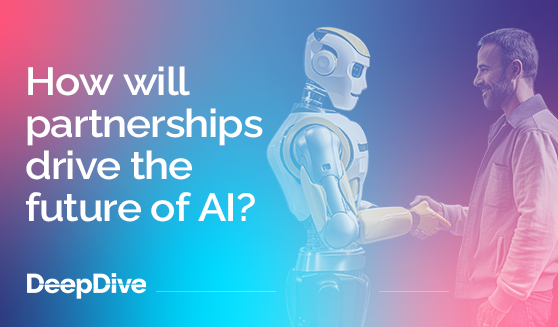
Developments in AI for the internet of things
Edge AI is driving important shifts in the Internet of Things (IoT) landscape by integrating artificial intelligence tech directly into IoT devices (also known as edge devices).


Welcome to the 32 new deep divers who joined us since last Wednesday. If you haven’t already, subscribe and join our community in receiving weekly AI insights, updates, and interviews with industry experts straight to your feed.
Did you see that Boston Dynamics video where robots danced to The Contours 1962 Motown classic Do You Love Me? It showed us in no uncertain terms that robots can dance – with remarkably fluid movements and rhythm.
But GenAI has introduced new opportunities to weave emerging technologies and dance together.
The impulse to dance is thought to have existed in early primates, even before the evolution of human beings. And throughout human history, dance has played a central role in ceremony, ritual, celebration and cultural expression. It’s still a big part of our lives around the world today; in entertainment and the arts, but also in community-building, and as a driver of human well-being.
Dance is part of being human. So it makes sense that we’re blending dance into the development of AI technologies that imitate and enhance our lives.
Researchers at Stanford have developed a new generative AI model called Editable Dance Generation (EDGE). It’s designed to choreograph human dance animation to match any piece of music – with rhythmic accuracy, emotional responsiveness, and realistic dances that are physically possible for a human dancer to learn and perform.
Karen Liu (Professor of Computer Science) said in a statement, “EDGE shows that AI-enabled characters can bring a level of musicality and artistry to dance animation that was not possible before.”
And this means that dance professionals can leverage AI to devise new choreography and communicate their ideas to dancers using 3D sequences. Importantly, the sequences created by EDGE can be edited – so choreographers have the freedom to adjust any detail of a physical motion.
There are now a number of AI tools available for generating text and images. And EDGE is introducing the potential of GenAI into human movement planning and idea generation in choreography – expanding the scope of AI into more creative industries.
We think the most exciting aspect of this new GenAI tool is that it represents another step towards a truly collaborative relationship between human beings and artificial intelligence. We’re developing tech that can support our creativity, enable new modes of expression, and bridge the gap between ideas in our heads and art that comes to life.
We’d love to know what you think. Do you imagine a future in which we can dance with AI – and if so, will it be good for human creativity, culture, and well-being? Tell us in the comment section on LinkedIn.
Did you miss DeepFest 2024? Don’t worry – register now to secure your place at the 2025 edition. We can’t wait to see you there

Edge AI is driving important shifts in the Internet of Things (IoT) landscape by integrating artificial intelligence tech directly into IoT devices (also known as edge devices).

Welcome to the 8 new deep divers who joined us since last Wednesday. If you haven’t already, subscribe and join our community in receiving weekly AI insights, updates, and interviews with industry experts straight to your feed. DeepDive Your weekly immersion in AI. You’ve heard it, we’ve

Welcome to the 10 new deep divers who joined us since last Wednesday. If you haven’t already, subscribe and join our community in receiving weekly AI insights, updates, and interviews with industry experts straight to your feed. DeepDive Your weekly immersion in AI. We recently wrote about the new

Edge AI is driving important shifts in the Internet of Things (IoT) landscape by integrating artificial intelligence tech directly into IoT devices (also known as edge devices).

Welcome to the 8 new deep divers who joined us since last Wednesday. If you haven’t already, subscribe and join our community in receiving weekly AI insights, updates, and interviews with industry experts straight to your feed. DeepDive Your weekly immersion in AI. You’ve heard it, we’ve

Welcome to the 10 new deep divers who joined us since last Wednesday. If you haven’t already, subscribe and join our community in receiving weekly AI insights, updates, and interviews with industry experts straight to your feed. DeepDive Your weekly immersion in AI. We recently wrote about the new